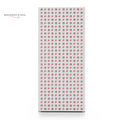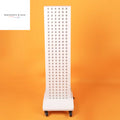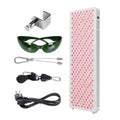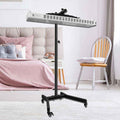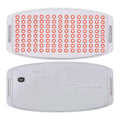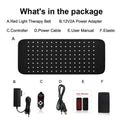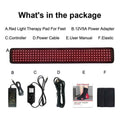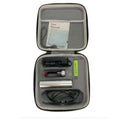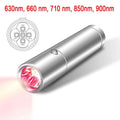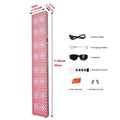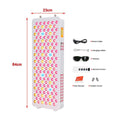How Red Light Therapy Energizes Your Cells: The Mitochondrial Connection
Posted by MARK HINDLE

You've probably heard of red light therapy (RLT) for skin rejuvenation, but its benefits go much deeper—literally to the core of your cells. RLT, also known as photobiomodulation, uses specific wavelengths of light to stimulate your body's cellular power plants: the mitochondria.
The Cellular Energy Boost
Mitochondria are responsible for producing adenosine triphosphate (ATP), the primary energy currency of all your cells. When your mitochondria are healthy and efficient, your body can perform all its functions optimally, from muscle recovery to cognitive function.
Red light therapy works by targeting a specific enzyme in the mitochondria called cytochrome c oxidase (CCO). This enzyme is a key part of the process that converts oxygen and nutrients into ATP. The red and near-infrared light from RLT is absorbed by CCO, which increases its activity. This, in turn, boosts ATP production, providing your cells with more energy to perform their essential tasks, such as repairing tissue, reducing inflammation, and fighting oxidative stress.
The Best Wavelengths and Frequencies
The effectiveness of RLT depends on the specific wavelengths of light used. Research shows that wavelengths in the red (630-670 nm) and near-infrared (810-890 nm) ranges are most effective at stimulating mitochondrial function.
Red light (630-670 nm) is primarily absorbed by the skin and is excellent for surface-level issues like skin health, collagen production, and treating inflammation.
Near-infrared (NIR) light (810-890 nm) penetrates deeper into tissues, making it ideal for targeting muscles, joints, and even brain cells. Many RLT devices combine both red and NIR light to provide a more comprehensive treatment.
Regarding frequency or pulse rate (in Hz), research is less conclusive on a single "ideal" frequency. However, some devices use pulsing to potentially enhance the therapeutic effects. For instance, some commercial devices utilize a 10 Hz NIR pulse function. What's more important than a specific pulse rate is the consistency of your sessions and the total amount of energy delivered (dose), which is influenced by the device's power output and the duration and distance of your treatment.
Real-World Benefits of Enhanced Mitochondrial Function
When your mitochondria are working more efficiently thanks to red light therapy, you may experience:
- Improved energy levels - More ATP means more cellular energy for daily activities
- Enhanced recovery - Better cellular repair processes support faster healing
- Reduced inflammation - Optimized cellular function helps manage inflammatory responses
- Better cognitive function - Brain cells benefit from increased mitochondrial efficiency
- Healthier aging - Supporting mitochondrial health may slow cellular aging processes
Getting the Most from Your Red Light Therapy
To maximize the mitochondrial benefits of red light therapy, consistency is key. Regular sessions with quality devices that deliver the right wavelengths at appropriate power densities will give your cells the best chance to boost their energy production.
Ready to energize your cells from the inside out? Explore our professional-grade red light therapy devices designed to optimize your mitochondrial health and overall wellness.
References from multiple sources, nature.com have a great article of how it helps in outer space! https://www.nature.com/articles/s41598-020-77290-w




